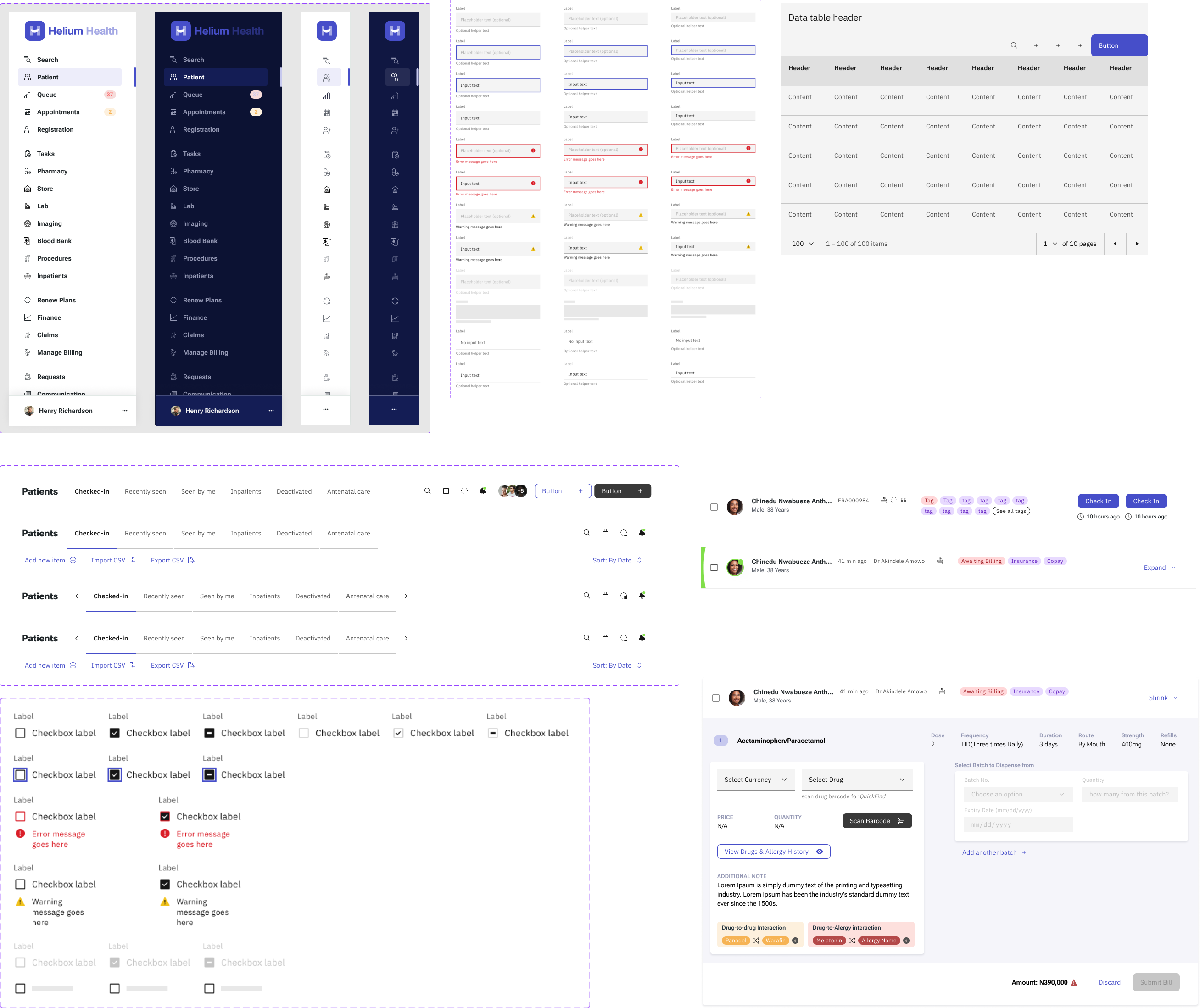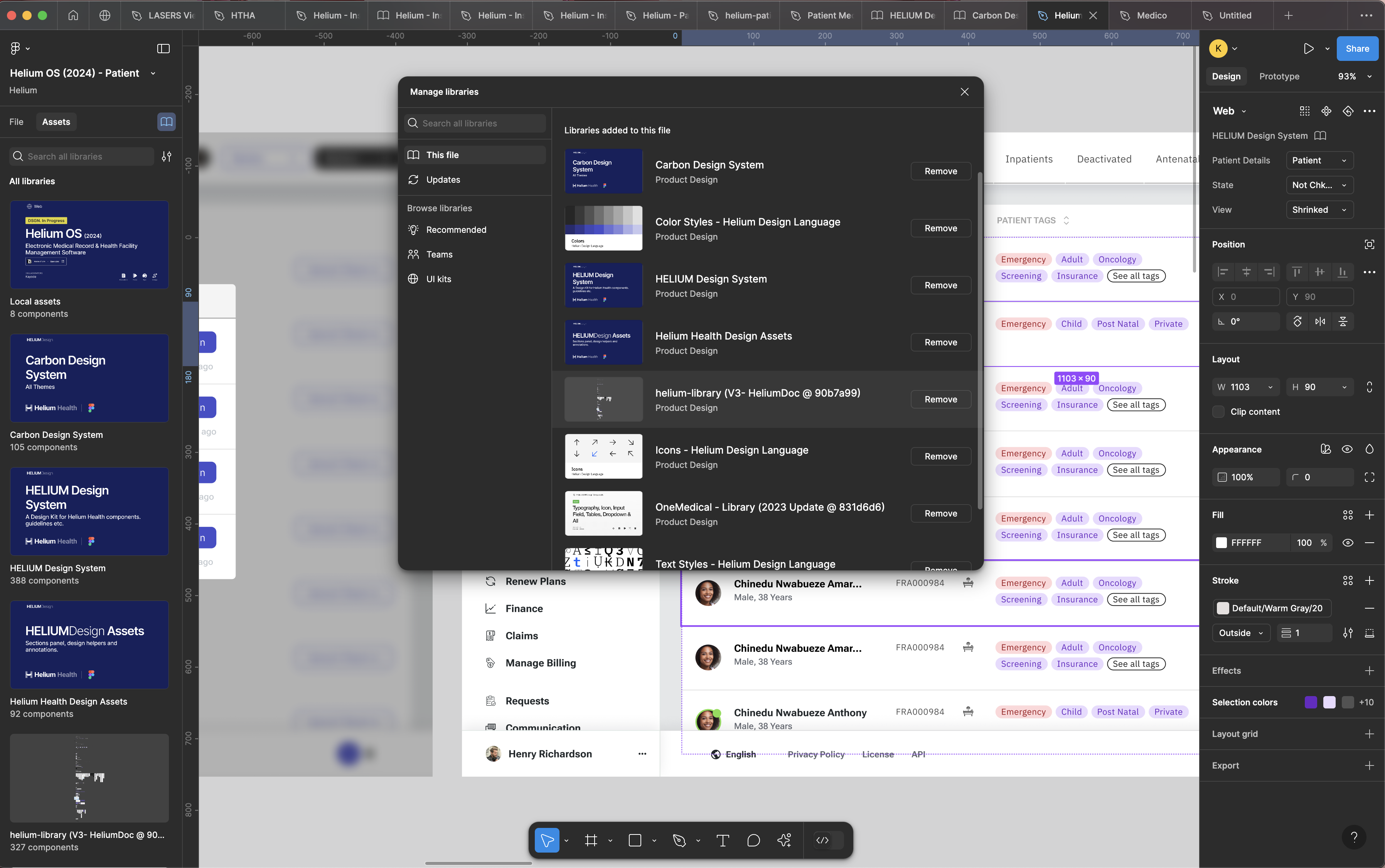HELIUM DESIGN SYSTEM
DESIGN SYSTEM
IMPLEMENTATION &
MANAGEMENT, RESEARCH,
usability TESTING.
BACKGROUND, GOALS & FUNCTION
Helium Health recently underwent a significant rebranding initiative, adopting a fresh visual identity that presented an exciting opportunity for our product design team to create consistency across our suite of products. Previously, due to acquisitions, each product under the Helium Health umbrella had its own design system, resulting in a lack of cohesion and visual consistency. The rebranding gave us the perfect reason to tackle this challenge head-on and establish a unified design system that would align all products under a single, cohesive brand identity.
This initiative led to the creation of “CARBON”, our new design system, which I had the privilege of leading. I was responsible for designing its components, integrating them into our design workflows, and ensuring seamless adoption across our product suite. Part of this involved mentoring younger designers on how to effectively use the design system, as well as structuring Figma libraries to connect all design files into a centralized system. CARBON was not just about visual consistency—it also enabled us to implement key usability improvements across our products, ensuring a better user experience for our customers.
One of my most significant contributions was transforming HeliumOS, our flagship electronic medical records (EMR) system, using the newly implemented design system. By applying CARBON to HeliumOS, I was able to elevate the product’s usability, visual appeal, and overall coherence with Helium Health’s new brand identity. This process not only streamlined our design process but also significantly enhanced the user experience across our ecosystem, setting a strong foundation for future product innovation.
RESEARCH & PLANNING
To ensure that CARBON would address the needs of both users and designers, I conducted the following:
Audit of Existing Products: I evaluated the visual design and usability of each product, identifying inconsistencies and common pain points.
Stakeholder Interviews: I collaborated with product managers, engineers, and marketing teams to understand business needs and technical constraints.
User Research: I gathered feedback from end-users to identify usability issues and areas for improvement.
Benchmarking: I analyzed successful design systems from similar companies to gather insights and inspiration.

INTEGRATING CARBON INTO WORKFLOWS
Figma Library Structure: I structured Figma libraries to centralize all design files, enabling seamless collaboration across the design team.
Documentation: I created detailed documentation to guide designers and developers on how to use CARBON effectively.
User Research: I gathered feedback from end-users to identify usability issues and areas for improvement.
Collaboration with Engineering: I worked closely with engineers to ensure smooth implementation of CARBON in the front-end codebase.
MENTORSHIP & TRAINING
I mentored junior designers on how to incorporate CARBON into their projects, providing guidance on best practices and efficient workflows. • I conducted training sessions to ensure team-wide adoption of the design system.

TRANFORMING HELIUMOS
One of the most significant applications of CARBON was the redesign of HeliumOS, Helium Health’s flagship electronic medical records (EMR) system. Prior to the redesign, HeliumOS was built with outdated components, lacked cohesive usability standards, and did not align with Helium Health’s new brand identity. However, one of the biggest challenges was ensuring that the integration of the CARBON design system did not disrupt the established workflows of healthcare professionals. Since these professionals rely on HeliumOS daily for critical tasks, introducing major changes could risk productivity and require significant time and training for adaptation.
The goal, therefore, was to seamlessly integrate the CARBON design system into HeliumOS while making meaningful usability improvements. This involved resolving existing pain points and enhancing the overall user experience without altering the familiar workflows our users depended on. The objective was to strike a balance between improving visual and functional aspects of the platform and maintaining continuity for healthcare professionals, ultimately driving higher satisfaction and better adoption rates.
One medical design system- Old
Carbon Design system - New